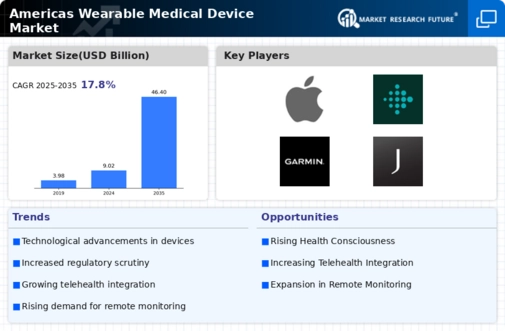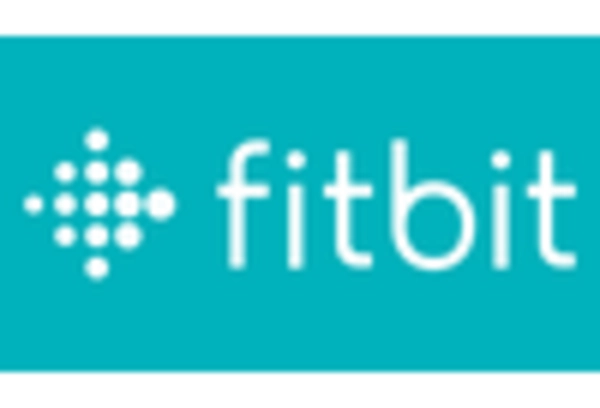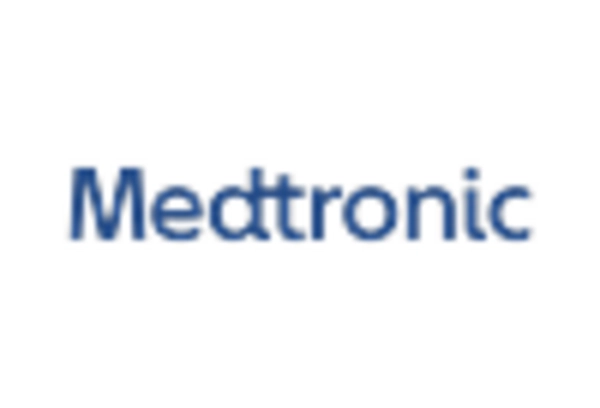Growing Aging Population
The aging population in North America is a critical driver for the wearable medical-device market. As the demographic shifts, the demand for health monitoring solutions tailored to older adults is increasing. By 2025, it is estimated that over 20% of the North American population will be aged 65 and older, many of whom require ongoing health management. Wearable devices that monitor chronic conditions, medication adherence, and physical activity are becoming essential tools for this demographic. The wearable medical-device market is thus poised to expand significantly, as manufacturers develop products specifically designed to meet the needs of an aging population.
Rising Prevalence of Chronic Diseases
The increasing incidence of chronic diseases such as diabetes, hypertension, and cardiovascular conditions in North America is a primary driver for the wearable medical-device market. According to recent data, approximately 60% of adults in the region are living with at least one chronic condition. This trend necessitates continuous health monitoring, which wearable devices can provide. As healthcare systems shift towards preventive care, the demand for devices that can track vital signs and health metrics is likely to grow. The wearable medical-device market is thus positioned to benefit from this rising prevalence, as patients and healthcare providers seek innovative solutions to manage chronic diseases effectively.
Increased Focus on Preventive Healthcare
There is a growing emphasis on preventive healthcare in North America, which is significantly influencing the wearable medical-device market. As consumers become more health-conscious, they are seeking tools that enable proactive health management. Wearable devices that monitor physical activity, sleep patterns, and vital signs are gaining traction among health-conscious individuals. Market data suggests that the preventive healthcare segment is expected to grow by approximately 15% annually, reflecting a shift in consumer behavior. This trend indicates that the wearable medical-device market is well-positioned to capitalize on the increasing demand for preventive health solutions.
Integration with Digital Health Platforms
The integration of wearable medical devices with digital health platforms is transforming the healthcare landscape in North America. This synergy allows for seamless data sharing between devices and healthcare providers, enhancing patient engagement and care management. As of 2025, it is estimated that over 70% of wearable devices will be compatible with telehealth services, facilitating remote monitoring and consultations. This trend not only improves patient outcomes but also reduces healthcare costs, making the wearable medical-device market increasingly attractive to investors and manufacturers. The potential for data analytics and personalized health insights further drives the adoption of these technologies.
Technological Innovations in Wearable Devices
Technological innovations are rapidly advancing the capabilities of wearable medical devices, driving growth in the North American market. Features such as real-time health monitoring, advanced sensors, and AI-driven analytics are becoming standard in new devices. As of 2025, it is projected that the market for smart wearables will reach $30 billion, with a significant portion attributed to medical applications. These innovations not only enhance user experience but also improve the accuracy and reliability of health data collected. Consequently, the wearable medical-device market is likely to see increased adoption as consumers and healthcare providers recognize the value of these advanced technologies.


















Leave a Comment